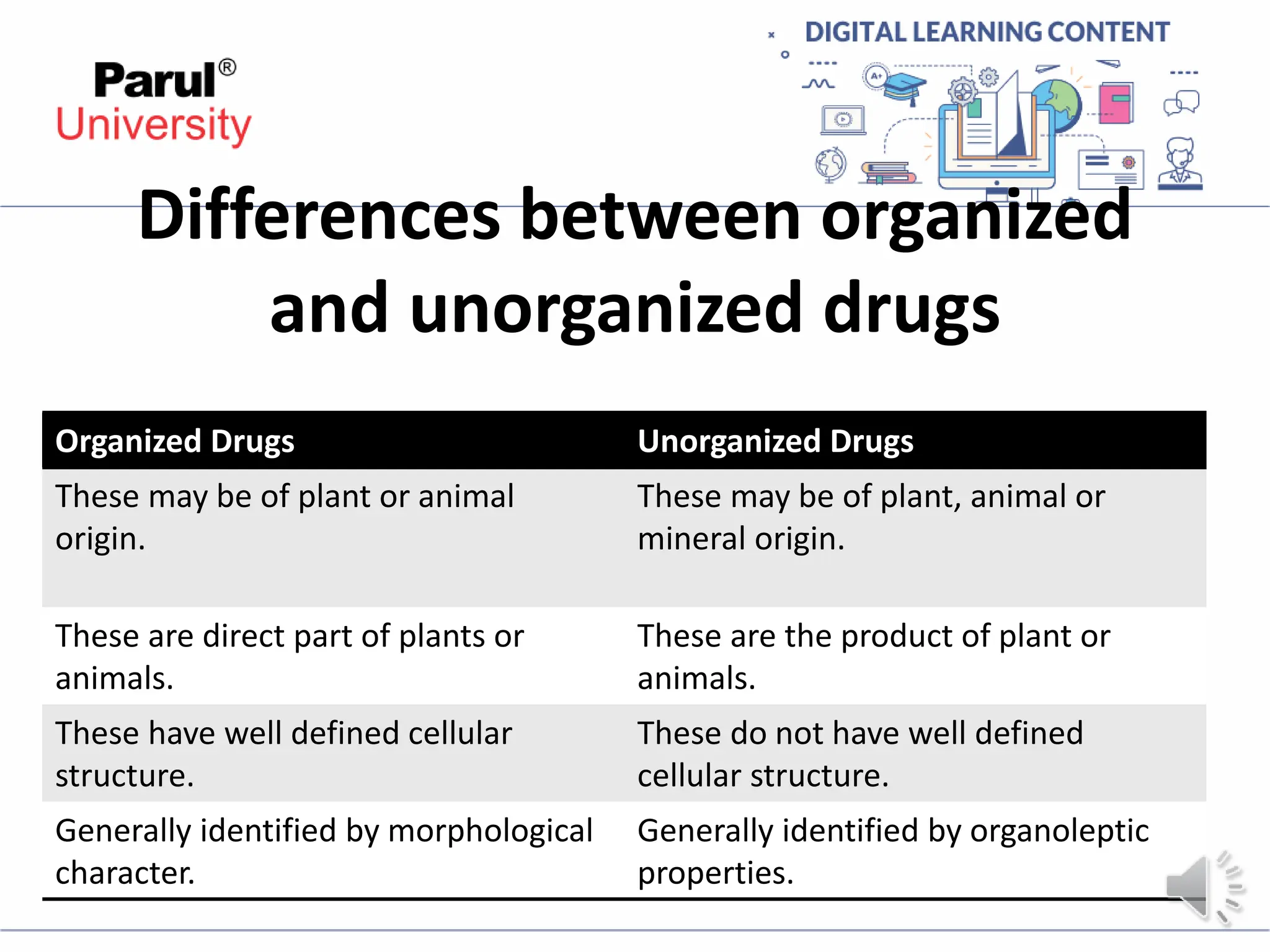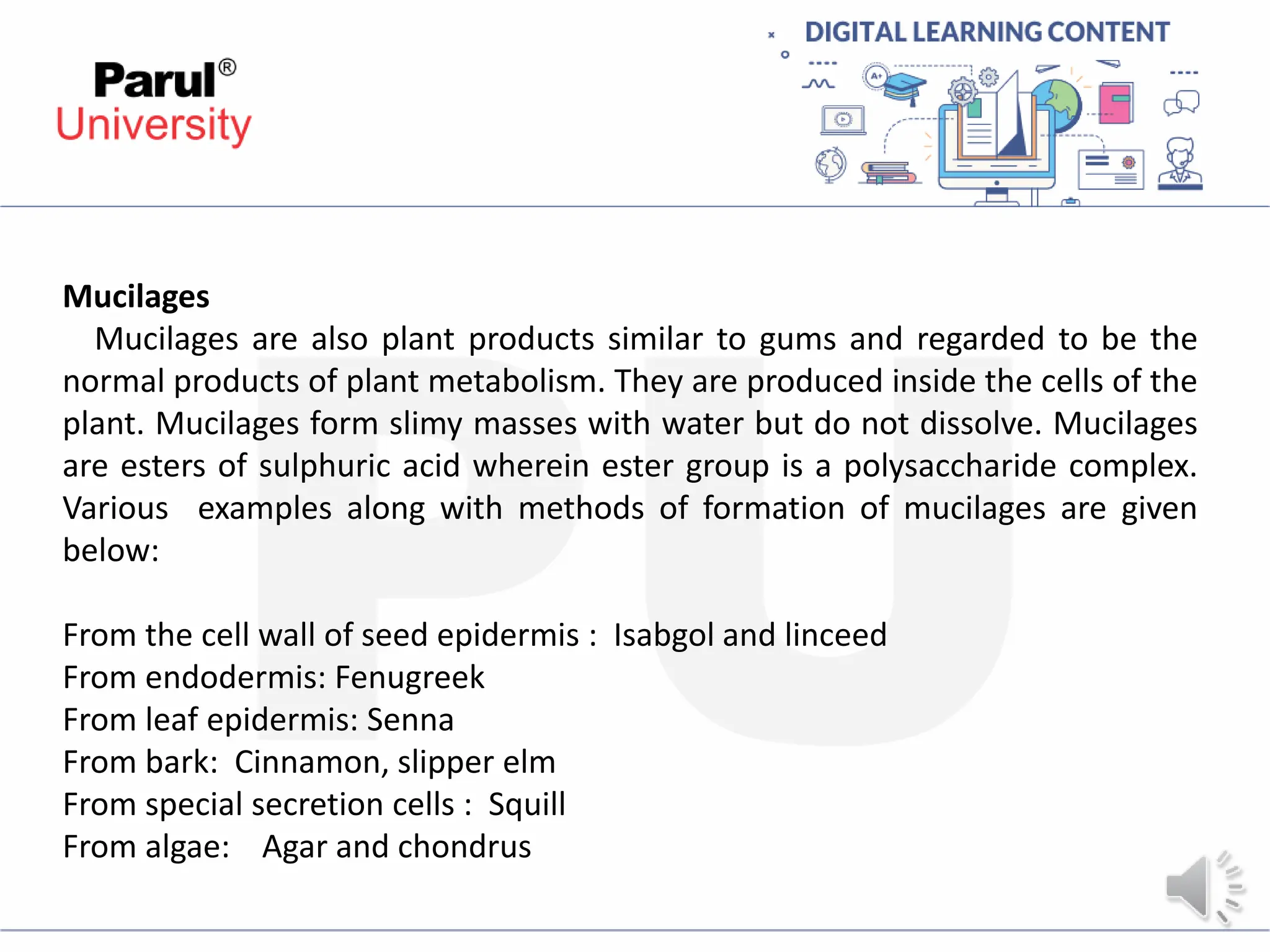This document provides an introduction to pharmacognosy, including definitions, history and scope. Pharmacognosy is defined as the study of crude drugs from natural sources. The history of pharmacognosy dates back thousands of years to ancient texts like the Rigveda and Ayurveda in India. Significant developments over time include the identification and isolation of active constituents from plants in the 19th-20th centuries and the use of biotechnology and genetic engineering today. The scope of pharmacognosy includes identifying, cultivating and standardizing natural drugs as well as discovering new drugs from natural sources. Major sources of drugs discussed are plants, animals, microbes, minerals and marine sources.




























































































![ii) Vein islet number – is defined as the number of vein-
islets per sq. mm of the leaf surface midway between midrib
and the margin. Levin in 1929 determined vein islet no.
Name of Plant Range
Adhatoda vasica 6-8
Datura stramonium 12-16
Digitalis purpurea 2.5-3.0
Eucalyptus globulus 8-13.5
Ocimum sanctum 19-23
2) Stomatal Index – it is the percentage proportion of number of stomata form from
the total no. of epidermis cell. Stomatal index are constant.
Calculated by using the following equation:
S.I. = [S / (E + S) ] X 100
Where, S.I.= Stomatal Index
S = No. of stomata per unit area
E = No. of epidermal cells in the same unit area](https://image.slidesharecdn.com/chapter-1pharmacognosy-240322063641-a69ce054/75/chapter-1-pharmacognosy-bpharm-4th-sem-cognosy-93-2048.jpg)














































